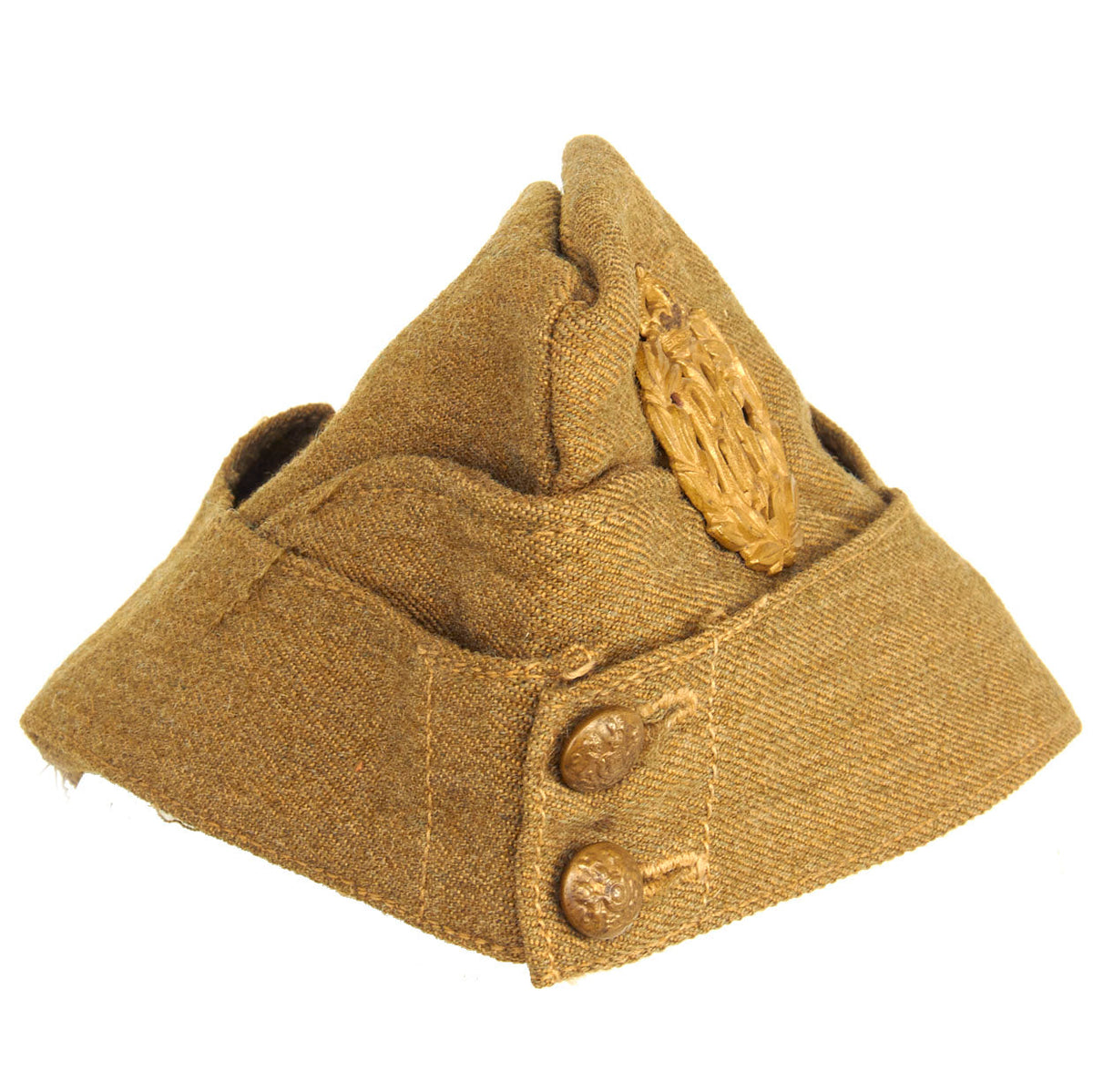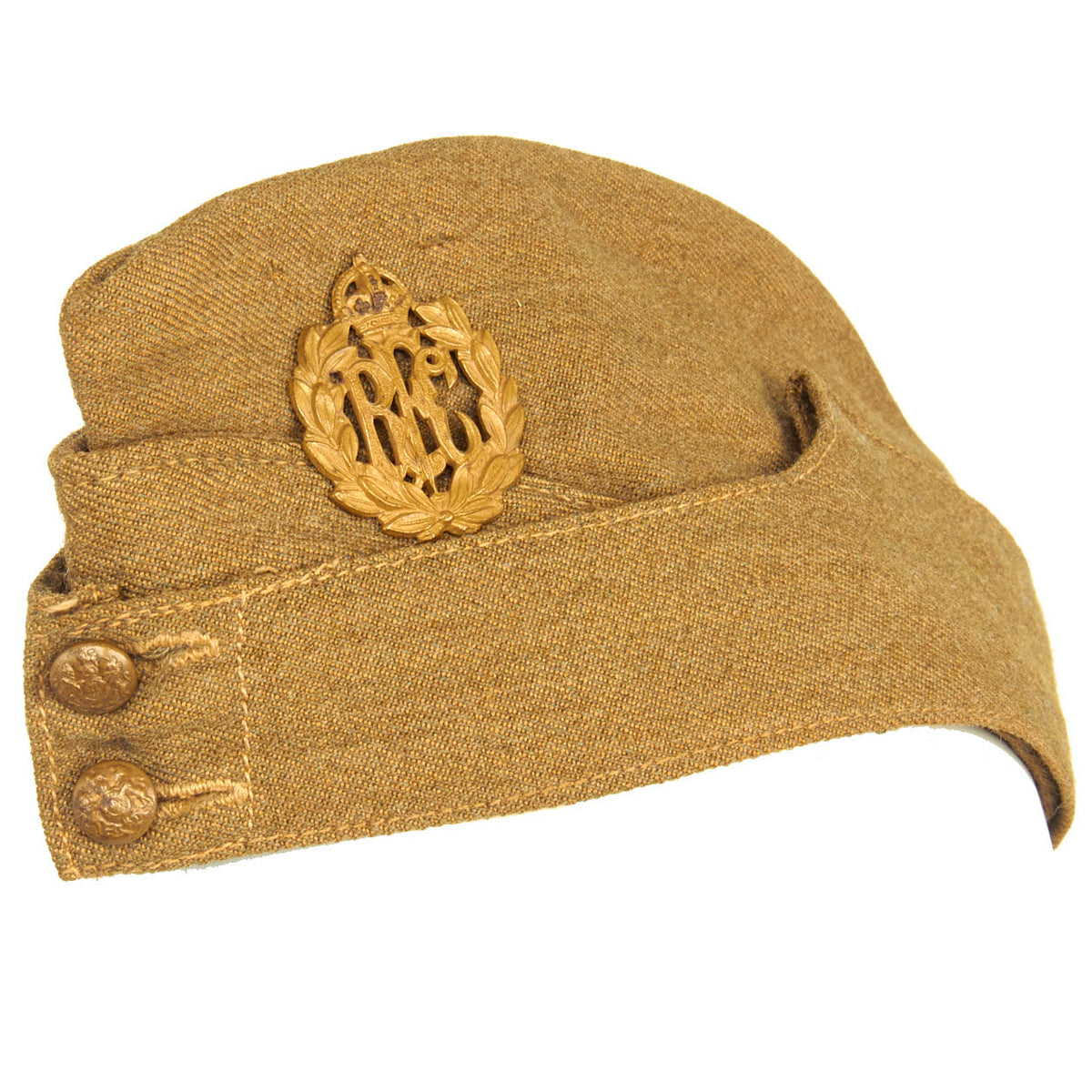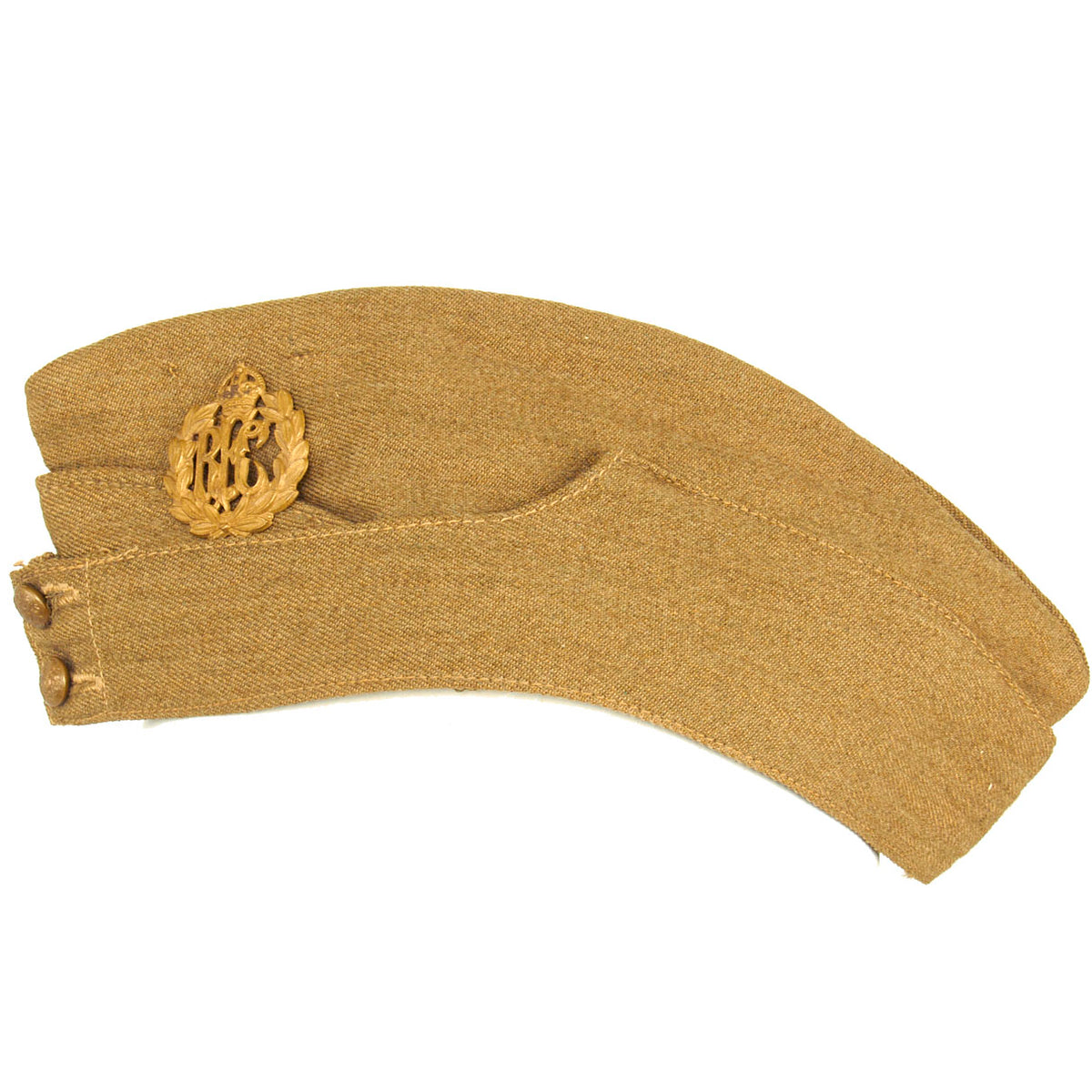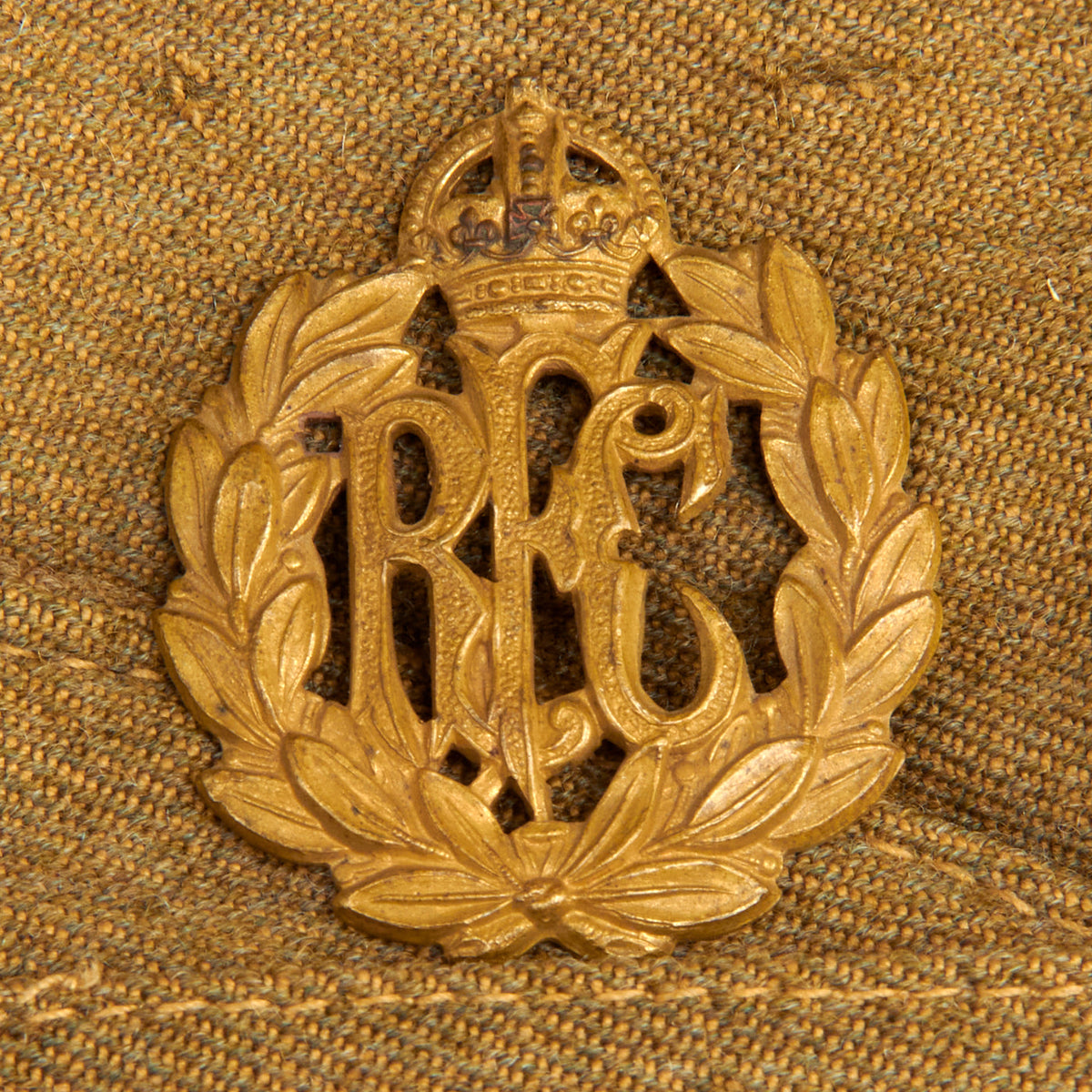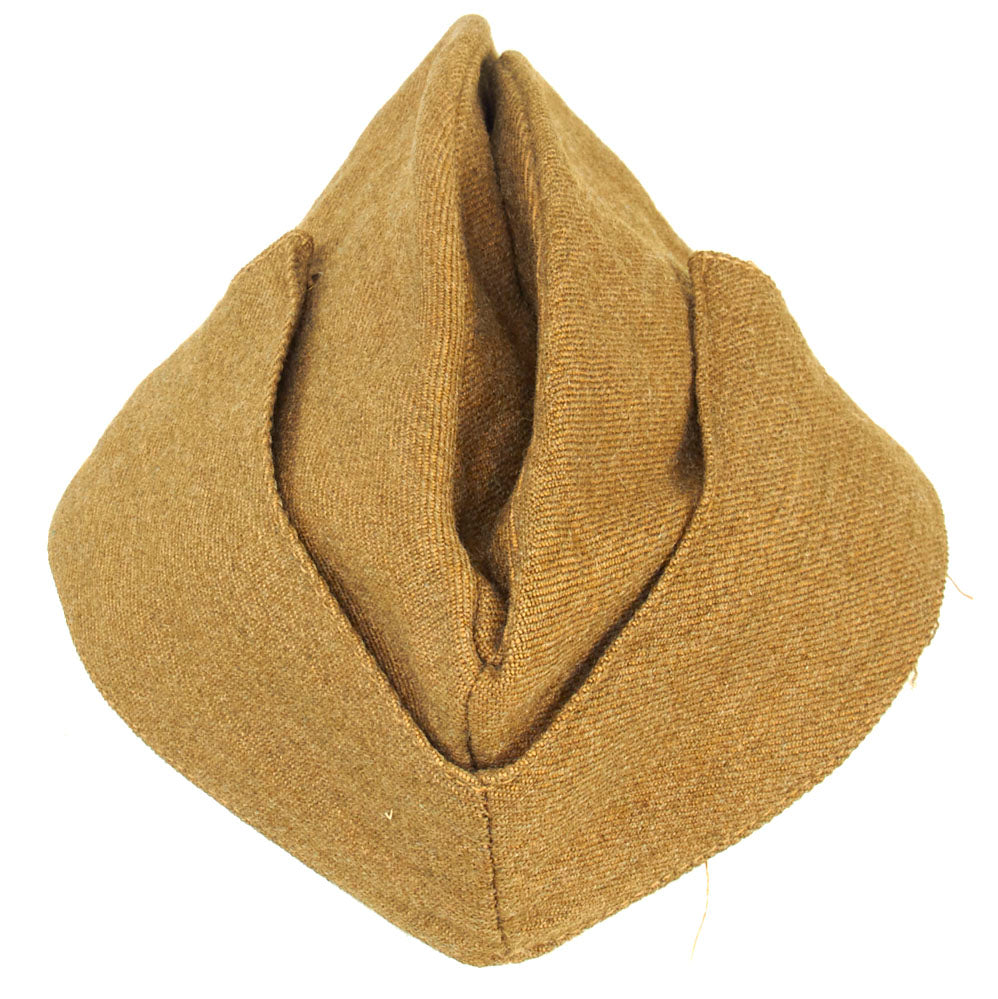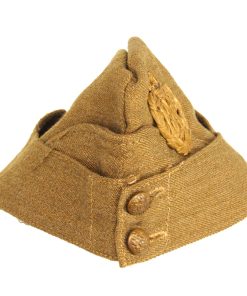Original British WWI Royal Flying Corps Officer Field Service Side Cap – Broad Arrow Marked and Named Original Items
$ 395,00 $ 118,50
Original Item: Only One Available. The Field Service Cap was first introduced into the British Army as early as 1894 in India. Originally made of distinctive regimental pattern colors, the cap was made of khaki cloth by the time it was introduced for wear by the Royal Flying Corps in 1913. With the introduction of the Battledress uniform in 1937, the Field Service Cap (khaki), adorned with appropriate unit badges, became the standard working dress for all ranks. The Field Service cap was replaced by the equally unpopular ‘Cap, General Service (GS)’ in 1943.
This is a very rare, original WWI British Royal Flying Corps Officers Side Cap in very good condition. The cap was tailor made to a very high standard. It has the RFC bronze badge on the left side. This is the correct khaki RFC overseas Side Cap bears the correct front double buttons that have King’s Crown over R.F.C. The interior is Broad Arrow stamped and also has the name C. LAMB faintly written on the lining.
A wonderful example ready for further research and display.
The Royal Flying Corps (RFC) was the air arm of the British Army before and during the First World War until it merged with the Royal Naval Air Service on 1 April 1918 to form the Royal Air Force. During the early part of the war, the RFC supported the British Army by artillery co-operation and photographic reconnaissance. This work gradually led RFC pilots into aerial battles with German pilots and later in the war included the strafing of enemy infantry and emplacements, the bombing of German military airfields and later the strategic bombing of German industrial and transport facilities.
At the start of World War I the RFC, commanded by Brigadier-General Sir David Henderson, consisted of five squadrons – one observation balloon squadron (RFC No 1 Squadron) and four airplane squadrons. These were first used for aerial spotting on 13 September 1914 but only became efficient when they perfected the use of wireless communication at Aubers Ridge on 9 May 1915. Aerial photography was attempted during 1914, but again only became effective the next year. By 1918, photographic images could be taken from 15,000 feet and were interpreted by over 3,000 personnel. Parachutes were not available to pilots of heavier-than-air craft in the RFC – nor were they used by the RAF during the First World War – although the Calthrop Guardian Angel parachute (1916 model) was officially adopted just as the war ended. By this time parachutes had been used by balloonists for three years.
On 17 August 1917, South African General Jan Smuts presented a report to the War Council on the future of air power. Because of its potential for the ‘devastation of enemy lands and the destruction of industrial and populous centers on a vast scale’, he recommended a new air service be formed that would be on a level with the Army and Royal Navy. The formation of the new service would also make the under-used men and machines of the Royal Naval Air Service (RNAS) available for action on the Western Front and end the inter-service rivalries that at times had adversely affected aircraft procurement. On 1 April 1918, the RFC and the RNAS were amalgamated to form a new service, the Royal Air Force (RAF), under the control of the new Air Ministry. After starting in 1914 with some 2,073 personnel, by the start of 1919 the RAF had 4,000 combat aircraft and 114,000 personnel in some 150 squadrons.
Fast Shipping with Professional Packaging
Thanks to our longstanding association with UPS FedEx DHL, and other major international carriers, we are able to provide a range of shipping options. Our warehouse staff is expertly trained and will wrap your products according to our exact and precise specifications. Prior to shipping, your goods will be thoroughly examined and securely secured. We ship to thousands clients each day across multiple countries. This shows how we're dedicated to be the largest retailer on the internet. Warehouses and distribution centres can be located throughout Europe as well as the USA.
Note: Orders with more than one item will be assigned a processing date depending on the item.
Before shipping before shipping, we'll conduct a thorough inspection of the items you have ordered. Today, the majority of orders will be delivered within 48 hours. The delivery time will be between 3-7 days.
Returns
The stock is dynamic and we cannot completely manage it because multiple stakeholders are involved, including our factory and warehouse. So the actual stock may alter at any time. It's possible that you may not receive your order once the order has been made.
Our policy is valid for a period of 30 days. If you don't receive the product within 30 days, we are not able to issue a refund or an exchange.
You can only return an item if it is unused and in the same state as the day you received it. You must have the item in its original packaging.
Related products
Uncategorized
Uncategorized
Armoured Fighting Vehicles of the World: AFVs of World War One (Hardcover Book) New Made Items
Uncategorized
Band of Brothers ORIGINAL GERMAN WWII Le. F.H. 18 10.5cm ARTILLERY PIECE Original Items
Uncategorized
Australian WWII Owen MK1 Machine Carbine SMG Custom Fabricated Replica with Sling Original Items
Uncategorized
Uncategorized
Uncategorized
Uncategorized
Uncategorized
Uncategorized
Uncategorized
Uncategorized
Uncategorized
Uncategorized
Uncategorized
